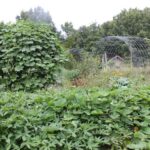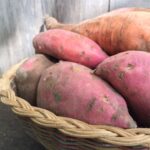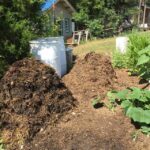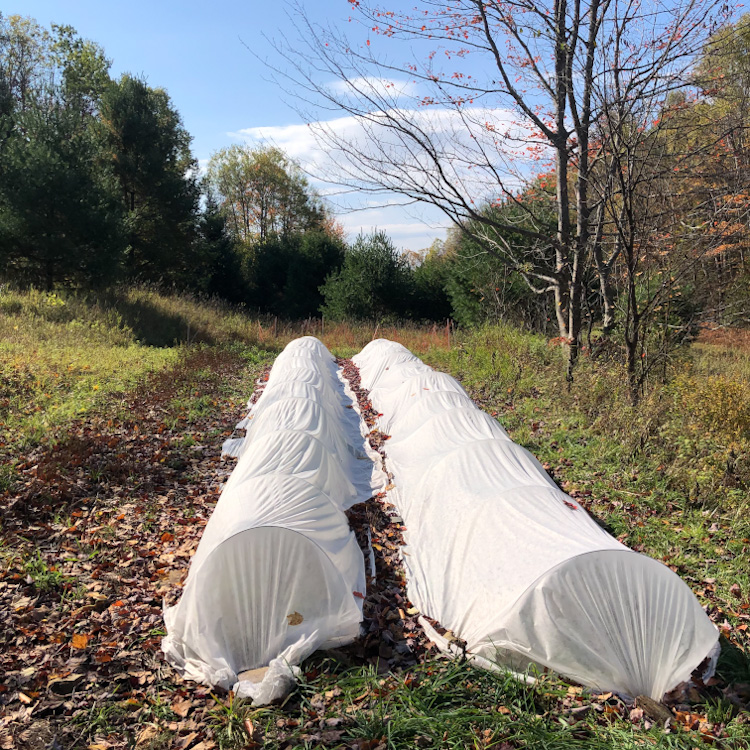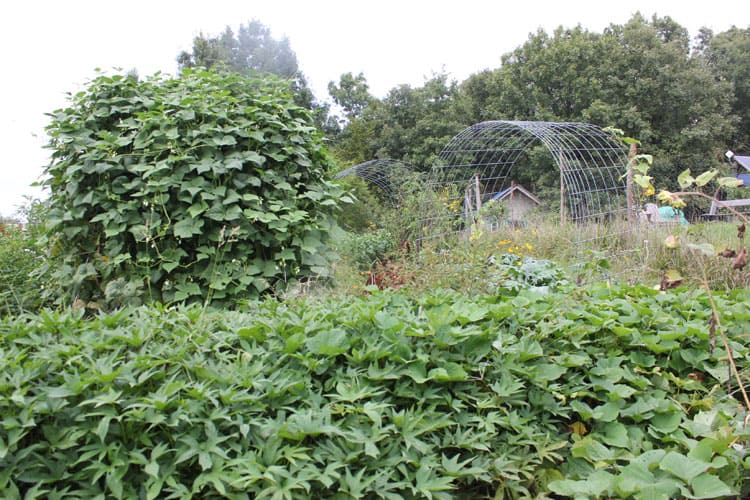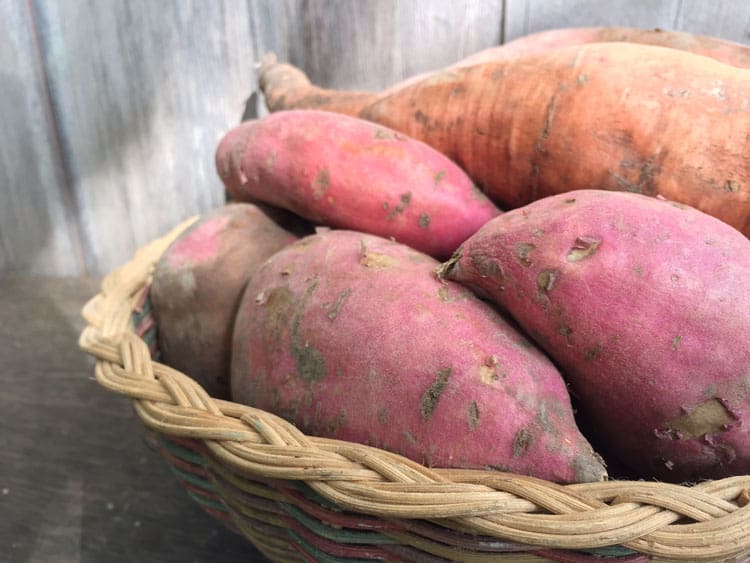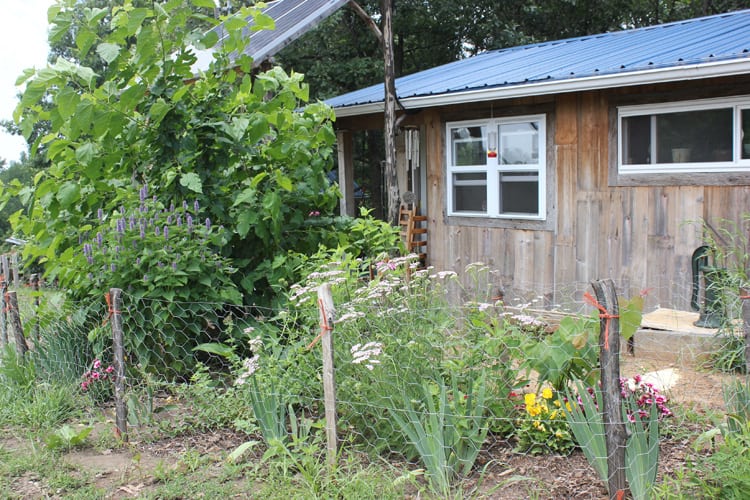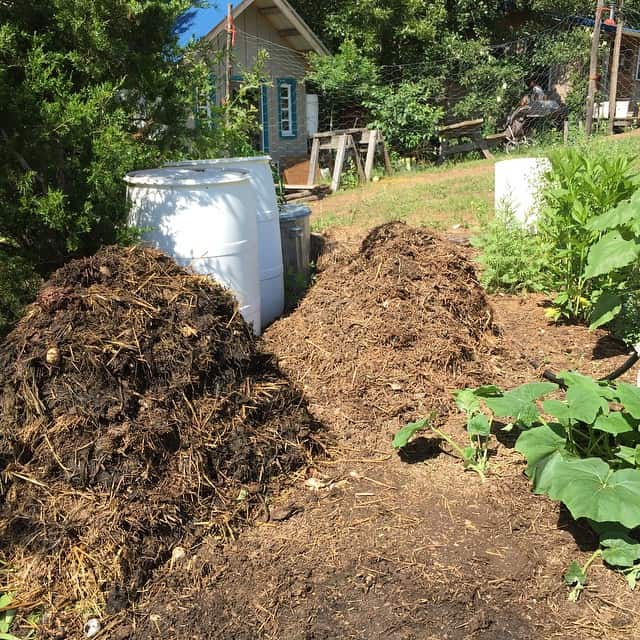Like many gardeners, when Autumn comes spherical I obsessively check my local weather app for indicators of frost or a troublesome freeze. I put a wide range of work into rising a late summer season and fall yard, and know that my future harvest relies upon defending crops from frost.
Luckily, it’s simple to protect crops from frost must you understand which greens need defending, and have devices on the ready. Let’s dive in!
This publish would possibly comprise affiliate hyperlinks. Please study my Privateness Protection & Disclosures for further information.
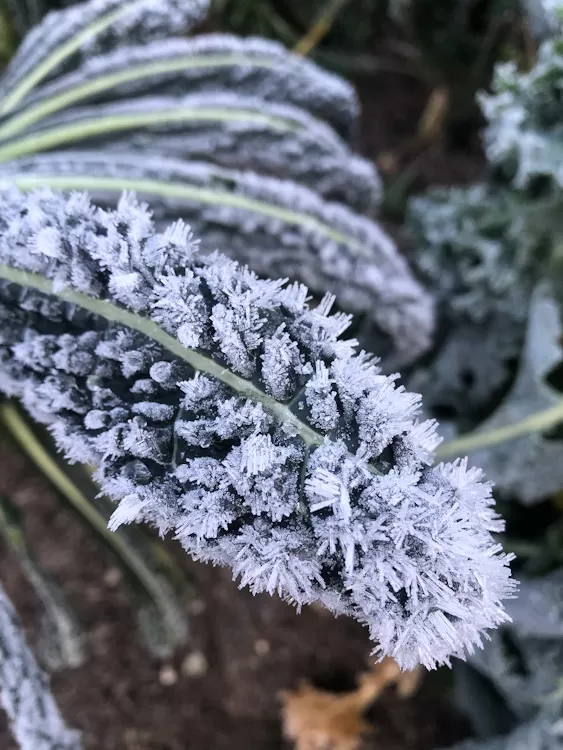

What’s a Frost?
A frost is a thin layer of ice that varieties when water vapor modifications from a gasoline to a robust. It occurs when temperatures go beneath the freezing stage. A lightweight-weight frost happens between 28-32°F, however it’s not until the temperatures dip beneath 28°F that many yard crops face hurt.
Frost hurt occurs in crops when water of their cells turns into ice crystals, stopping the movement of fluids and damaging the plant’s tissue. The tissue appears water-soaked and soggy, turning into darker in shade and limp over time.
Together with yard greens, new perennials, bushes, or bushes planted exterior shall be weak to frost hurt, so that you just’ll want to pay attention to them as properly.
What Crops Should Be Shielded from Frost?
Frost would not affect all crops equally, so it’s helpful for gardeners to understand the chilly tolerance of your plantings.
Tender Crops
Tender, or cold-sensitive, crops are merely damaged or killed by frost till you provide security. All summer season, or warm-season crops like tomatoes, cucumbers, basil, peppers, corn, and inexperienced beans fall into this class.
Citrus bushes, many annual flowers, and customary houseplants are moreover tender, as are youthful seedlings and sprouts, even of perennial crops or cold-hardy crops.
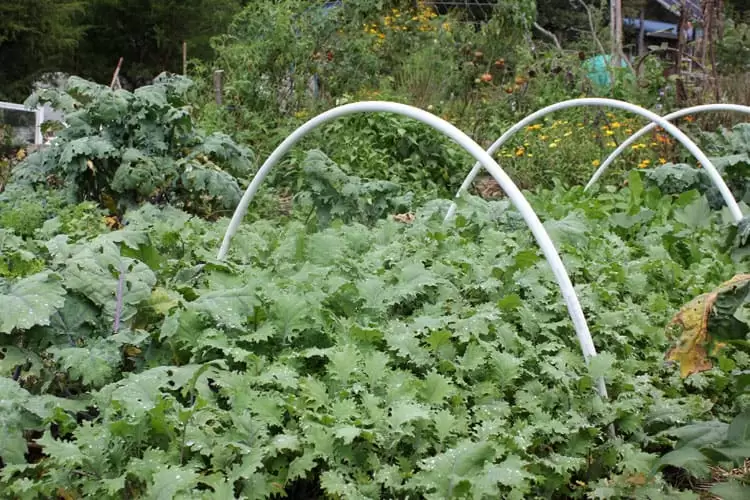

Chilly-Hardy Crops
Hardy crops cope with frost and freezing temperatures properly. Some annual vegetable crops are cold-hardy, equal to cabbage, kale, broccoli, cauliflower, carrots, radishes, beets, and others.
In chilly conditions, some crops convert the starches of their cells to sucrose (sugar) to behave as a pure “anti-freeze.” Subsequently, you will note that that quite a lot of your favorite cold-hardy greens actually type larger after a light-weight frost! (Attempt a frost-sweetened carrot – you’ll certainly not return!)
The chilly tolerance of cold-hardy crops varies significantly, from plant to plant and choice to choice. For example, 19F temperatures ultimate week frivolously damaged my “Lacinato” kale, nonetheless did not affect my “Vates” kale the least bit. Brussel sprouts are nonetheless thriving with none cowl, whereas most of my cabbages are surviving solely as a result of a row cowl.
For an beautiful helpful useful resource on chilly tolerance in greens, I wish to suggest finding out this textual content by Sustainable Market Farming. They’ve been retaining information of winter kill temperatures for years, so after I neglect to keep up my very personal information, I remind myself which veggies to stress about using their lists!
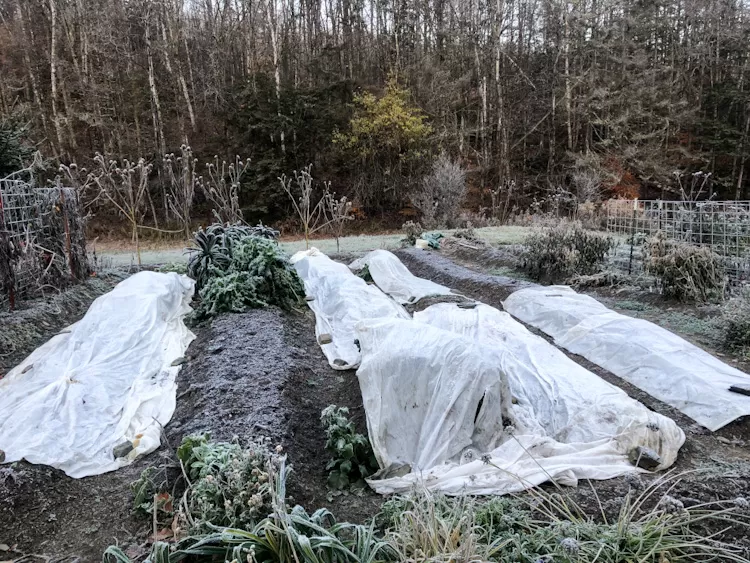

Know Your Frost Dates!
When you occur to don’t already know your frequent first/ultimate frost dates, use an internet based mostly (or totally different) instrument to lookup your frequent first frost date inside the fall and your frequent ultimate frost inside the spring, and mark them in your calendar.
Widespread first/ultimate frost dates are often based totally on 30 years of historic temperature info to your location, nonetheless your exact first/late frost dates would possibly differ.
For example, my revealed first frost date is roughly September 18, nonetheless this yr we did not get a frost until mid-October. My frequent ultimate frost date is Might 24, nonetheless most native gardeners will not plant tomatoes and totally different tender crops until Memorial Day weekend.
As your frequent first frost date approaches, pay attention to your every day forecast. Retaining monitor of the local weather is a obligatory exercise for gardeners, and certain environmental conditions enhance the prospect of frost.
Cloudy nights insulate the earth from swings in temperature which can set off a sudden frost, nonetheless clear skies at evening time allow heat to flee into the ambiance. One different subject that may improve the prospect of a frost is calm conditions with none wind. An absence of air movement implies that hotter air currents cannot switch over the underside and defend it from frost.
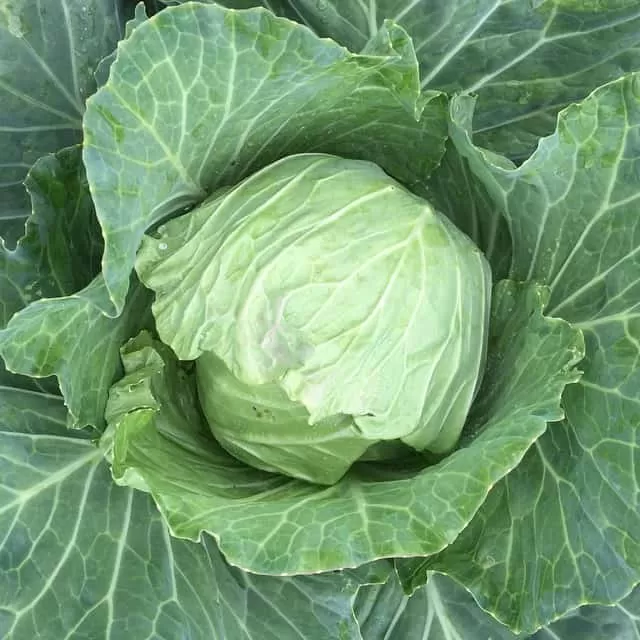

Select Acceptable Crops for Your Planting Zone
An very important step which you can take to protect crops from frost is to pick out relevant crops to your rising zone. As an example, I do know that in my zone 4 native climate, warm-loving annuals like okra, sweet potatoes, or eggplants require further wish to thrive in my fast gardening season. Chilly-hardy crops like Brussel sprouts, carrots, and spinach are precise stars, tasting way more sweet when the cool Autumn temperatures arrive.
I select seeds which might be relevant for transient season rising and favor cold-tolerant greens with names like “Winter King.” And regretfully, I do know that I mustn’t plant warm-loving fruit bushes like citrus and figs inside the flooring.
The best way to Protect Crops from Frost
Now that we’ve lined the basics, let’s discuss some smart strategies which you can defend crops from frost.
Convey Potted Crops Inside
Whilst you see a frost on the forecast, switch your potted crops and hanging baskets inside inside the evening. Container-grown crops are vulnerable to frost hurt on account of they lack the earth insulation that in-ground crops revenue from.
When shifting potted crops inside, steer clear of a sudden change in temperature. Ideally, switch your container crops to a storage, shed, or basement.
You would possibly need to try this frost-avoidance dance for a lot of weeks, nonetheless it’s best to have the pleasure of getting enjoyable together with your container crops a bit longer!
In case you’ve gotten home indoors, certain crops will simply do high-quality in a sunny window. I’ve a potted rosemary plant sitting subsequent to my desk correct now; come summer season, it will return exterior onto my sunny porch.
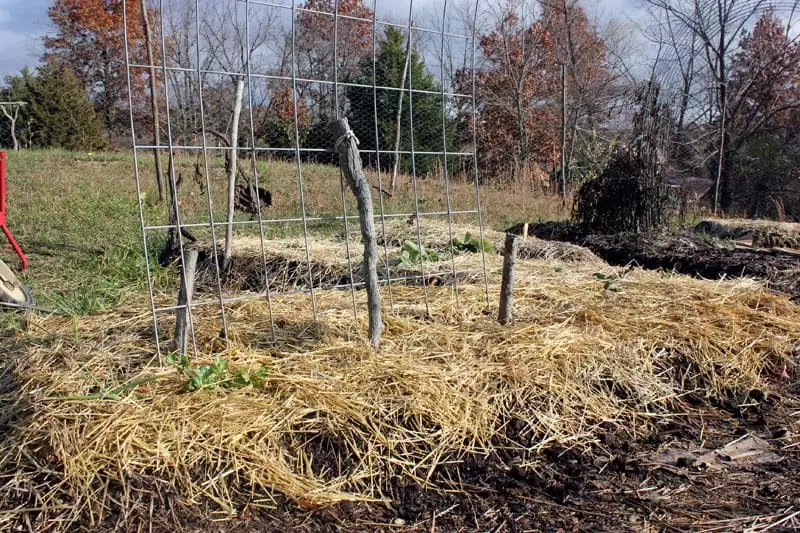

Use a Thick Layer of Mulch
A thick layer of mulch in your crops is akin to carrying a warmth woolen sweater when the temperatures dip. Spreading a 3-6” layer of mulch over your in-ground yard protects the soil and the crops’ roots from temperature modifications.
You probably can mulch with any of the following:
- Straw/Mulch hay
- Wood Chips
- Leaf Mould
- Grass Clippings
- Shredded Leaves
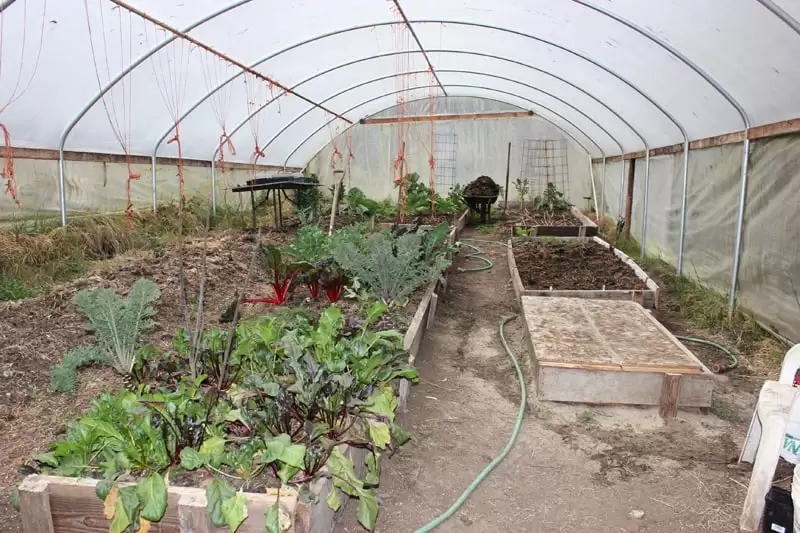

Develop in a Extreme Tunnel or Greenhouse
In an excellent world, these of us rising in chilly climates would have entry to a extreme tunnel or heated greenhouse to develop meals yr spherical, nonetheless that is not on a regular basis doable or fairly priced.
Nonetheless, in case you’ve gotten the home and money to place cash right into a extreme tunnel, they’re nice additions to your yard. We purchased a 20 x 50 foot extreme tunnel for our Oregon homestead and grew year-round in it. Winter months launched crisp carrot and kale harvests, whereas summers gave tomatoes and peppers the extra improve of warmth they needed to offer appreciable crops.
This yr I’m going to be making 7 ft gothic tunnels over my beds, using a buddy’s design and instruments document. By his calculations, it should give me lined rising home for beneath $3 a linear foot.
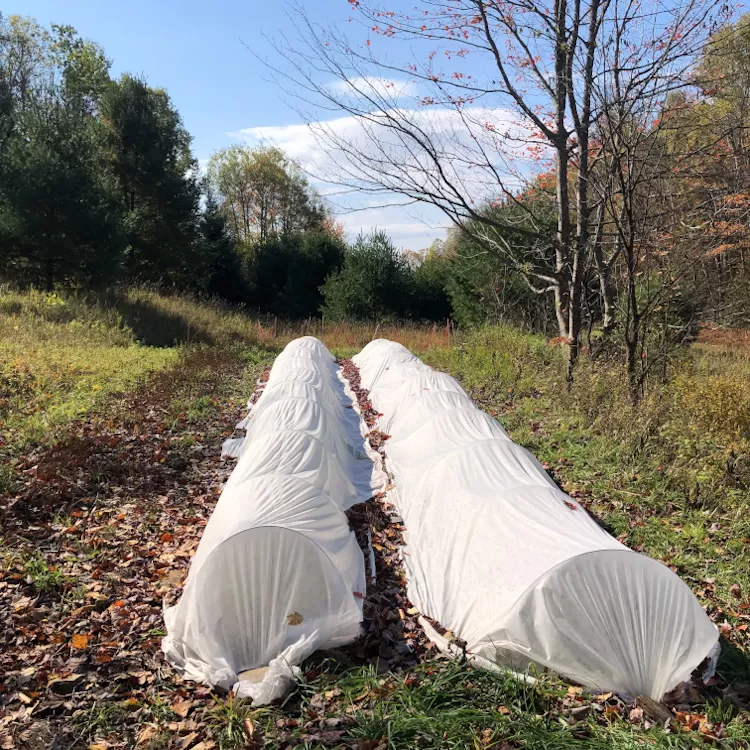

Cowl Your Crops with a Blanket
Among the many most interesting strategies to protect crops from frost is to cowl your crops with a frost blanket or a row cowl. While you don’t have to purchase row cowl – blankets, mattress sheets, towels, and drop cloths all work properly – I want to purchase row cowl and use it for every frost security and bug security. I exploit Agribon AG-19, which provides me about 4 ranges F frost security and permits 85% gentle transmission, so it’s relevant to utilize as an insect cowl.
I exploit skinny wire poles from Johnny’s Seeds to create hoops over my yard beds, then drape row cowl over to create a low tunnel. I exploit rocks or sandbags to crush the quilt all through the mattress and on the ends.
When you occur to’re coping with a great heavier frost, then add a layer of plastic over the blanket. This offers a layer of insulation for the heat from the soil.
I haven’t tried this myself, nonetheless I’ve heard of using mylar thermal emergency blankets to lure the heat, and mirror heat into the soil. (Merely make sure you take away the blanket sooner than the temperature will improve the next day, in any other case it’s possible you’ll fry your crops!!)
Place Scorching Water Jugs Under Row Cowl
Proper right here’s one different attention-grabbing choice to defend crops from frost: Fill plastic milk jugs with scorching water and set the jugs spherical your crops as evening time falls. Then, cowl the beds with row cowl or a blanket, using rocks or sandbags to keep up the edges of the quilt down.
The current water jugs will slowly launch its heat, making a microclimate of warmth.
Make Explicit individual Cloches for Your Crops
A cloche is a bell-shaped cowl that gardeners make from plastic or glass that retains your crops cozy as a result of the temperatures dip low. Many people use milk jugs with the bottoms cut back off, nonetheless you should purchase reusable plastic or glass yard cloches.
When you occur to get ingenious, a wide range of points spherical your private home can develop into DIY yard cloches.
As an example, an enormous Rubbermaid tote can cowl a number of plant in your yard. In addition to, an upside-down bucket, an upside-down flower pot, juice containers, and plastic bowls are some good decisions for handmade yard cloches.
String Christmas Lights Spherical Your Crops
Although I’ve however to do that, I’ve seen totally different growers string Christmas lights spherical crops or fruit bushes sooner than inserting a row cowl or blanket. The lights (choose non-LED ones) emit a small amount of heat that may very well be merely the rise your crops should be protected in opposition to an impending frost. This may be notably useful all through an shocking spring chilly snap.
Wrap Fruit Timber
When you occur to fruit bushes, youthful ones between one to 4 years outdated is also further delicate to frost hurt.
If bushes have buds or blossoms inside the spring, a troublesome frost might stunt the growth, leading to a decreased harvest all by your rising season. In case you’ve gotten citrus bushes, then it is good to be notably cautious about low temperatures. One thing beneath 29°F might set off excessive to eternal hurt to your bushes.
Using towels, blankets, cardboard, rags, pipe insulation, burlap, or felted tree protector wraps, start on the bottom of the trunk and wrap throughout the trunk, making certain to overlap the layers every few inches. Then, use twine or weatherproof tape to secure the wrap.
What to Do With Frost Damaged Crops
Frost-damaged crops have leaves and branches that flip black or brown. When the local weather warms up and the hazard of any frost passes, then, it’s time to prune away the damaged foliage.
If a spring frost “touched” the tops of your crops, somewhat little bit of pruning is all chances are high you may should set the plant once more on the right path! That may be very true of one factor like basil – a plant that is tender, nonetheless tremendously benefits from pruning!
Usually, a plant appears to be wilty and lifeless nonetheless will proceed to develop and producing! We had a 13 diploma F evening time ultimate evening time, and my Brussel sprouts look pretty sad. Nevertheless I assume when it warms once more as a lot because the thirties this week, we’re going to uncover some utterly good sprouts beneath the droopy leaves!
Get Rising!
I’m an unlimited fan of rising meals properly into the autumn and winter. Nevertheless worthwhile fall gardening requires cautious consideration to frost and security of your crops.
For further particulars about learn to plan and plant a fall yard, along with an inventory of cold-hardy greens and varieties, check out my book, Homestead Honey’s Data to Fall Gardening.
In case you’ve gotten any questions on defending your yard from frost, or extending your rising season, please depart them inside the suggestions!
And as on a regular basis, must you uncover this textual content helpful, please share, or subscribe!
